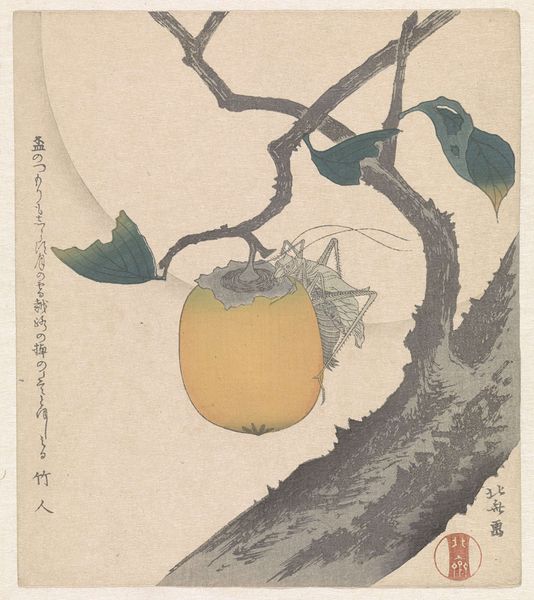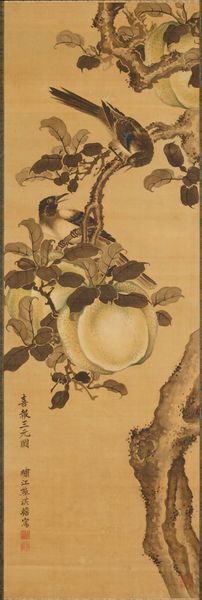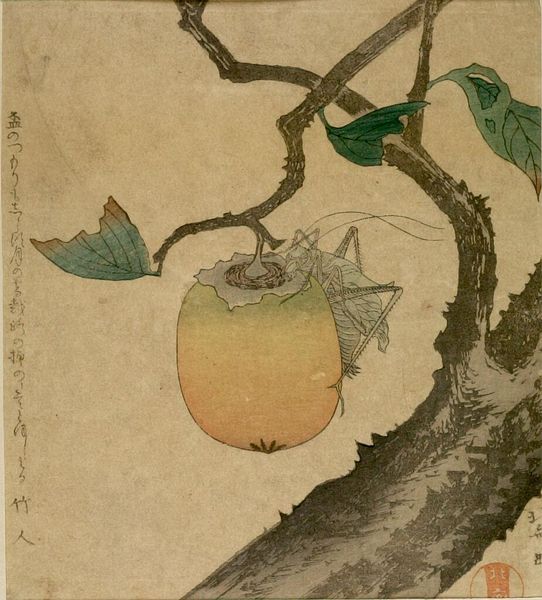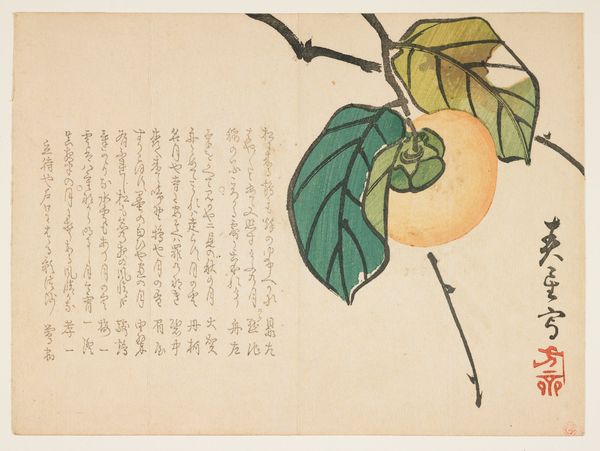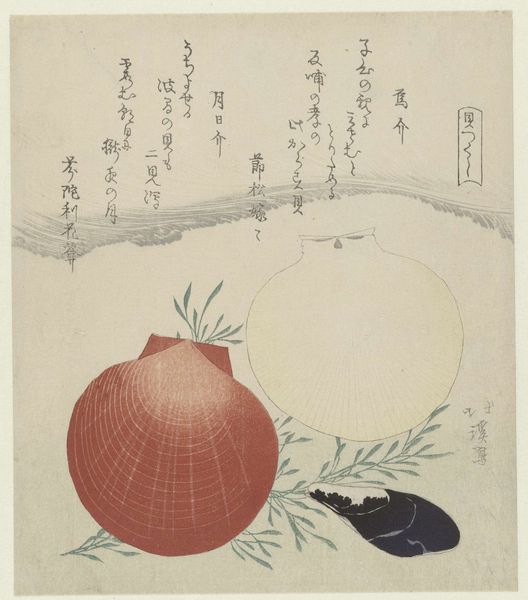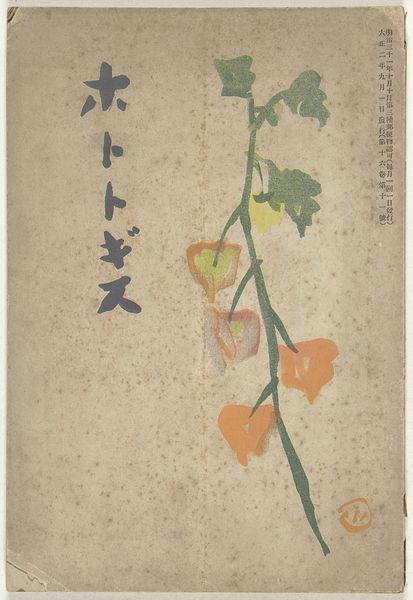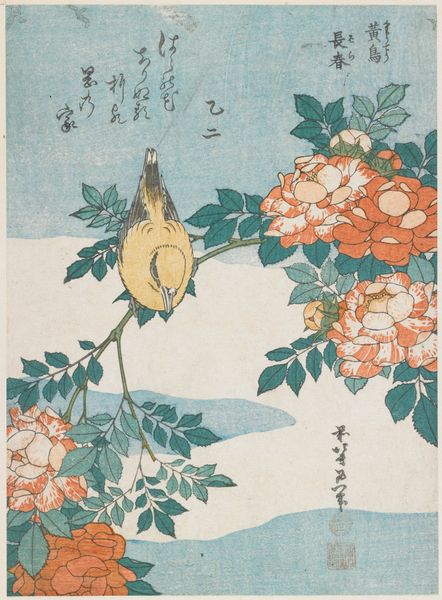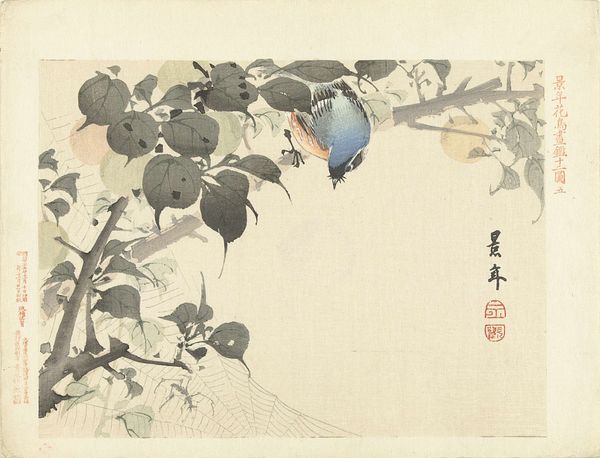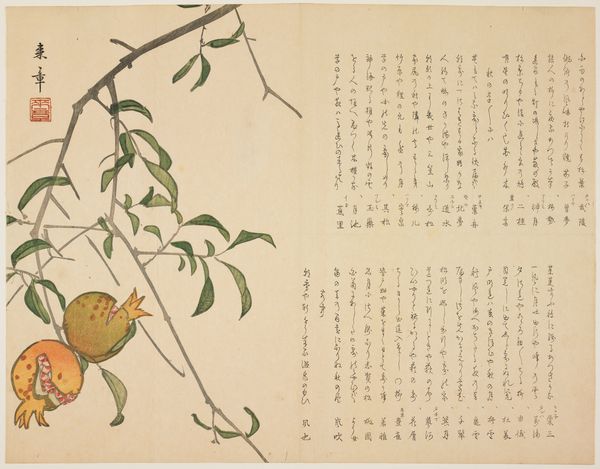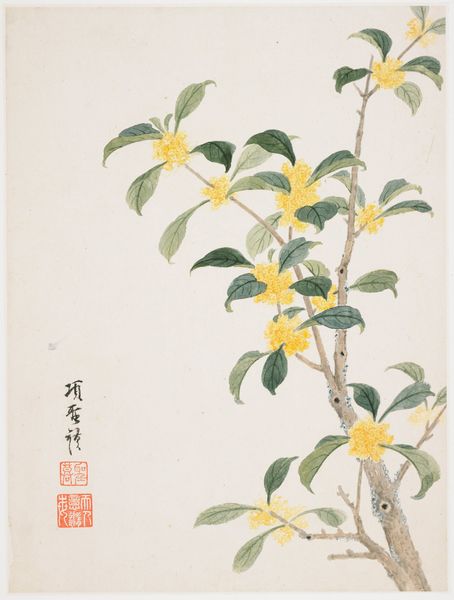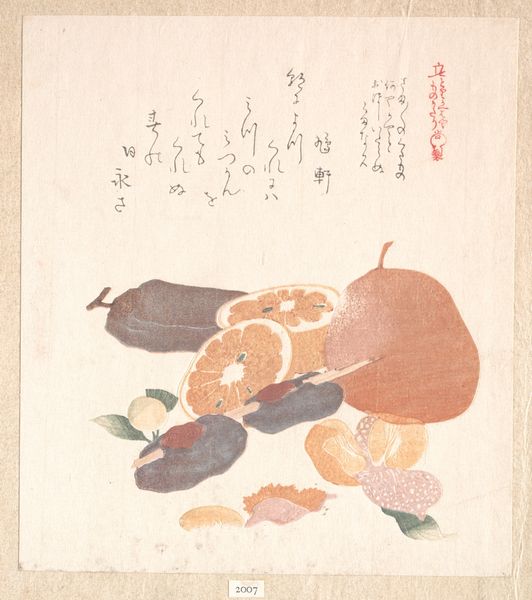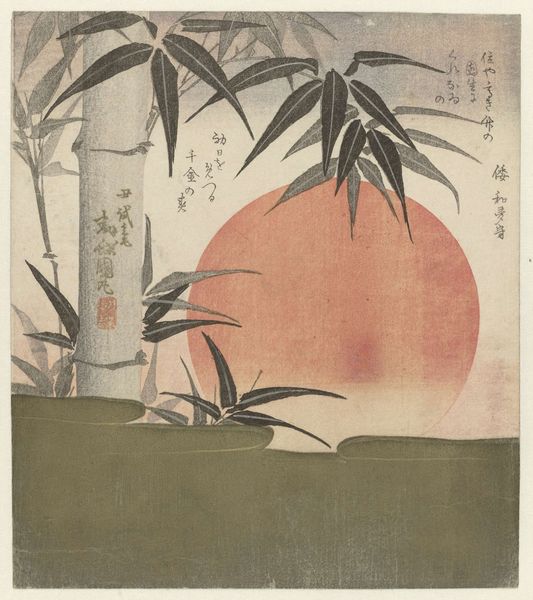
Dimensions: height 205 mm, width 180 mm
Copyright: Rijks Museum: Open Domain
This woodblock print by Katsushika Hokusai depicts a persimmon fruit, or ‘kaki,’ with a grasshopper. In Japanese culture, the persimmon symbolizes autumn and longevity. The grasshopper, often seen as a symbol of good luck and abundance due to its association with plentiful harvests, is here depicted in verdant detail. Now, consider the symbolism of insects and fruit across cultures. In ancient Greek art, insects, particularly bees, symbolized the soul. Fruits, depending on the context, could represent fertility or temptation, a notion carried into the Christian tradition. Here, the kaki, ripe and inviting, along with the grasshopper, speaks to the cycle of life and the bounty of nature. This pairing, though simple, reminds us of the enduring human connection to nature and the symbols that shape our understanding of the world. Such a visual and sensory tableau touches the observer on a profound, almost primal level. In the cyclical progression of images, we see how symbols resurface, evolving, taking on new meanings in different historical contexts.
Comments
No comments
Be the first to comment and join the conversation on the ultimate creative platform.
